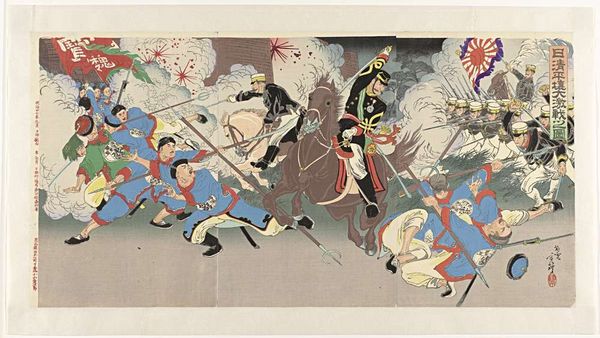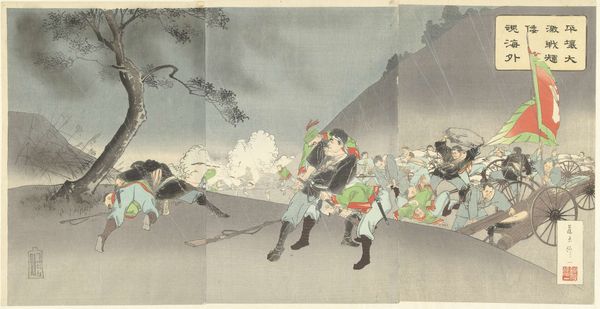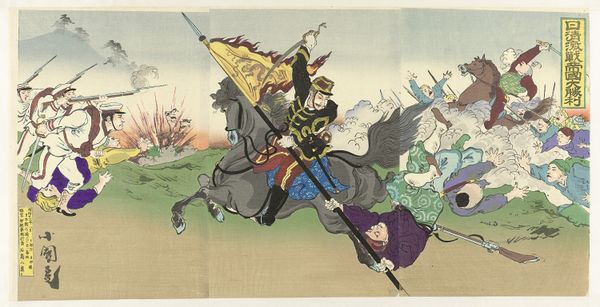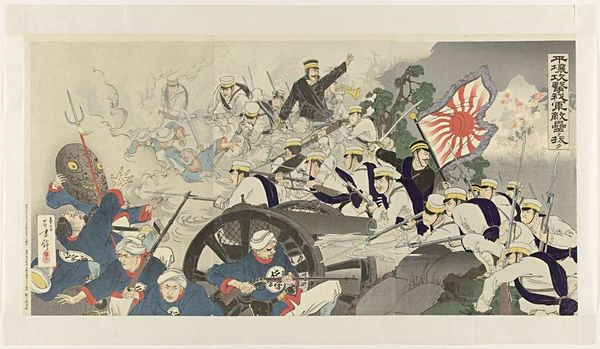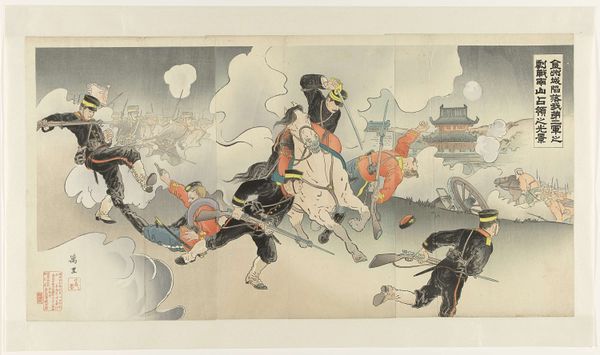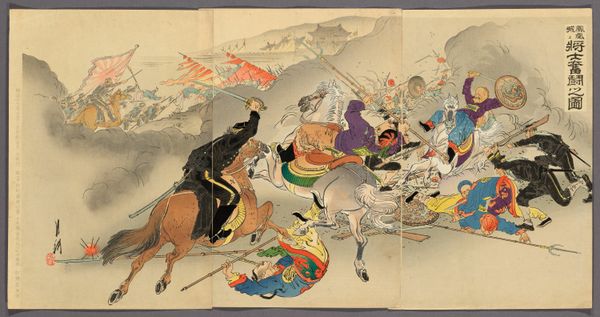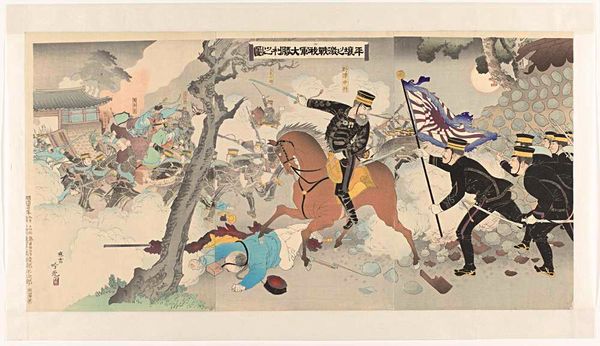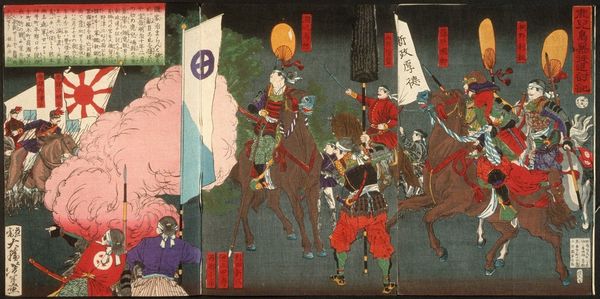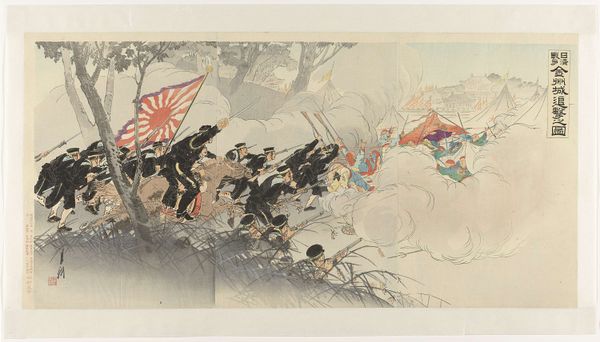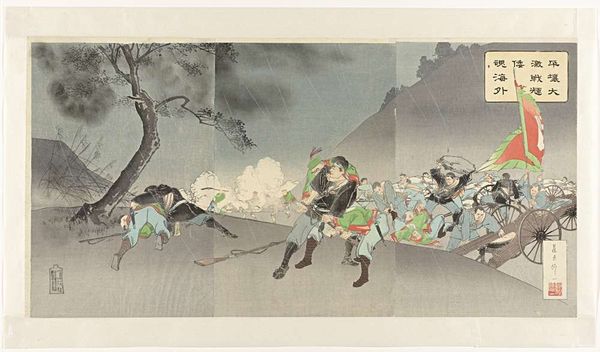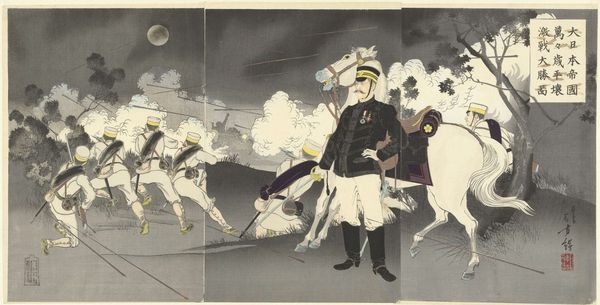
Hoe onze strijdkrachten de Chinese soldaten te Pyongyang verslaan. 1894 - 1899
0:00
0:00
adachiginko
Rijksmuseum
Dimensions: height 357 mm, width 718 mm
Copyright: Rijks Museum: Open Domain
Curator: Here at the Rijksmuseum, we have Adachi Ginkō's woodblock print from the late 19th century titled "Hoe onze strijdkrachten de Chinese soldaten te Pyongyang verslaan." It vividly depicts a scene from the First Sino-Japanese War. Editor: My initial impression is of swirling chaos. The smoke from battle practically obscures the background, creating this disorienting sense of movement. What strikes me is the very tactile impression— I can almost feel the paper grain, see the carved lines. Curator: The print is an excellent example of Meiji-era propaganda. Note the glorification of the Japanese military might and the stark contrast in portrayal. Japanese troops are structured, organized, while the Chinese appear as a faceless, disorganized mass amidst the smoke. This imagery served to promote national unity and bolster support for the war effort. Editor: And the materiality amplifies that. Woodblock prints were mass-produced; a readily available medium designed for wide consumption. So, beyond the visual representation of power, the print's very existence and distribution became part of that same demonstration. Curator: Exactly. Ukiyo-e prints, traditionally associated with depictions of entertainment and beautiful women, were repurposed to disseminate war narratives and promote nationalistic sentiment, which contributed greatly to their function as both aesthetic objects and propaganda tools. Editor: The level of craftsmanship here is fascinating too. Looking at the texture on the tree and in the sky, how precisely they carved to make the figures feel three-dimensional—it all goes toward crafting that particular message of power. Curator: And don’t overlook the Japonisme aspect! Western audiences at the time were avidly collecting these prints, further cementing Japan's image as a modern, powerful nation on the global stage. These images weren’t just for domestic consumption. Editor: So it is also about demonstrating superiority of the Japanese method to Western tastes, aligning politics with an aesthetic experience? It’s interesting to view this as a produced, commodified item contributing to the rhetoric, really impacting how Japan presented itself culturally at the time. Curator: Indeed. A complex blend of artistry, politics, and social messaging, encapsulated in ink and paper. Editor: A battle, pressed and reproduced; materials carrying history.
Comments
No comments
Be the first to comment and join the conversation on the ultimate creative platform.
